Peculiar Produce Picks
Kumquats
With its sweet skin and tart pulp, kumquats taste like an inside-out orange. The small ovular fruit can be eaten whole to savor the contrast in flavor — or, if bitter isn’t your thing, just eat the fiber-rich peel for a straight burst of sweetness. This exotic fruit also provides a blast of vitamin C, an antioxidant that helps to prevent arthritis, cataracts, and macular degeneration, while promoting radiant, glowing skin and healthy, strong hair. Pop it in your bag for a perfect on-the-go snack; or slice into rounds and toss in a salad for a little zest. You can even add these under-the-radar gems to your favorite smoothie recipe for a bright shot of citrus flavor — yum!
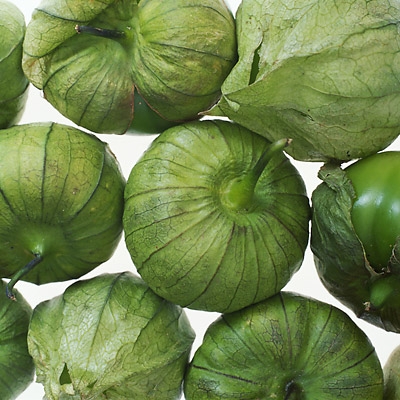
Tomatillos
Tomatillos
Tomatillos are yellow, red, green, and even purple when ripe, but you’re more likely to find the green variety in the produce section of your local supermarket. These tart fruits look like small tomatoes, but their papery covering or husk sets them apart. As a staple in Mexican cuisine, tomatillos are typically used in raw and cooked green sauces and salsas. You can also incorporate these flavorful tomato lookalikes into salads, stews, and chili to add a tangy kick to your favorite Latin-inspired recipes.
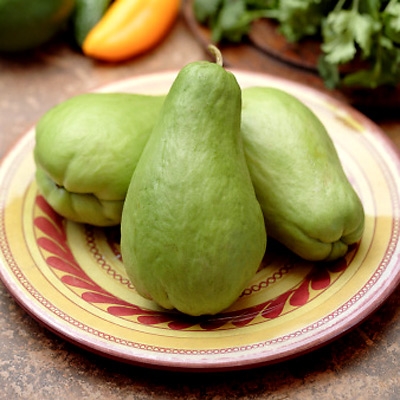
Chayote Squash
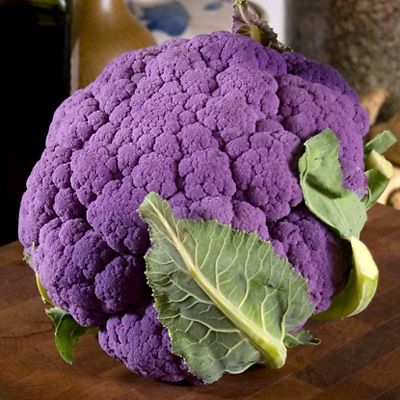
Purple Cauliflower
Purple Cauliflower
The purple cauliflower, also called the Violet Queen, gets its bright color from the antioxidant anthocyanin, the same compound that gives red cabbage and red wine their purple hues. Just a half-cup serving of this vibrant veggie provides almost half of your daily requirements for vitamin C, and just like its ivory sister, purple cauliflower has an ample amount of fiber to keep you feeling fuller longer. Try roasting florets with a hint of balsamic vinegar for an easy scrumptious side dish or try substituting the purple variety in my Cauliflower Mashed “Potatoes” recipe to jazz up the dinner table with a pop of fun color.

White Asparagus
White Asparagus
White asparagus is simply green asparagus that’s been slathered in “sunscreen” — when growing, white asparagus is covered with soil to keep sunlight out, preventing the plant from producing the chlorophyll that gives traditional asparagus its green color. Considered a delicacy in Europe, this “royal vegetable” is only available for a short period of time in the spring, so be sure take advantage of the elegant ivory veggie before it disappears. With a slightly milder taste and more tender texture than the green version, the white version can be used interchangeably in recipes calling for regular asparagus. In fact, it’s great for dinner parties since it looks impressive but is actually super-simple to prepare. I like to serve it steamed, roasted, or grilled as a side dish, or toss bite-sized pieces into salads and omelets for some extra crunch.
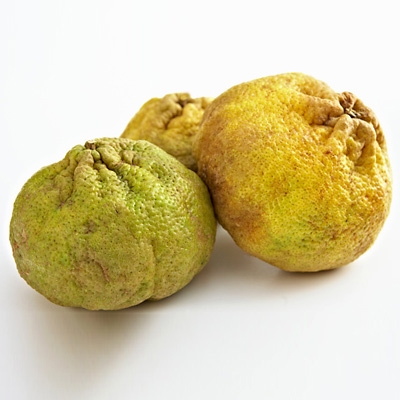
Ugli Fruit
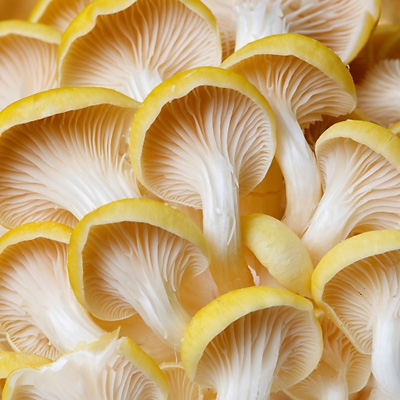
Oyster Mushrooms
Oyster Mushrooms
When it comes to members of the fungi family, there are some pretty odd looking characters situated next to the more familiar button and portabella mushrooms. If you’re a shroom lover, I highly recommend giving oyster mushrooms a try – they are super simple to use and add a beautiful flavor and texture to many dishes. This gourmet mushroom is not only luxuriously tasty, but it also contains significant amounts of niacin and lovastatin, both of which have been shown to help lower LDL (“lousy”) cholesterol levels. It is important to note that these mushrooms are quite delicate and should be added in toward the end of cooking for best results. For a simple weeknight meal, try slicing oyster mushrooms into my shrimp and vegetable stir-fry.
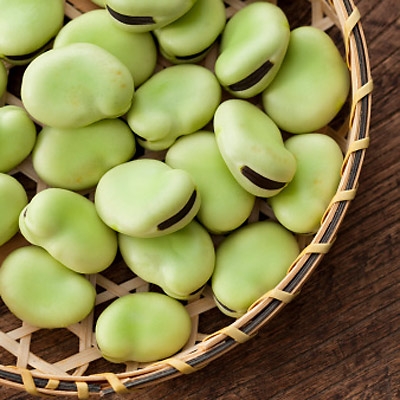
Fava Beans
Fava Beans
This Mediterranean legume comes in beautiful bright green pods and is known for its creamy, buttery flavor and smooth texture. While the beans can be a bit of a chore to peel, the extra effort is worth the terrific source of satiating fiber (9 grams per 1 cup serving) hidden inside. Fava beans are also an excellent source of vegetarian protein, making it a nutritious addition to soups, salads, pastas, and so much more — the possibilities are endless!
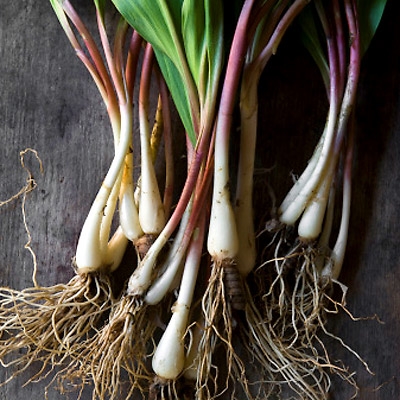
Ramps
Ramps
Ramps have a deliciously strong garlic-type smell and onion-like flavor so they can be used, raw or cooked, in any recipe that calls for these aromatic veggies. They provide a punch of flavor to just about any dish, but I like to toss them into frittatas and omelets to amp up the taste. Try them in my Red Pepper, Chard, and Feta Frittata recipe for a shot of iron, beta carotene and Vitamin C — a scrumptious way to strengthen your immune system.
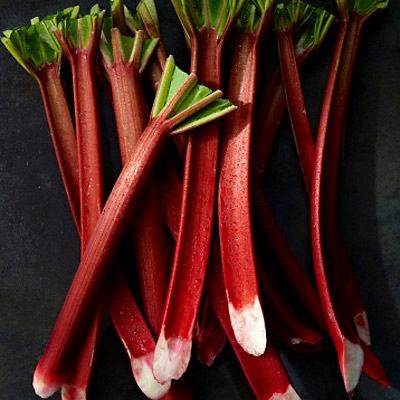
Rhubarb
Rhubarb
Rhubarb is a vegetable with a reddish-pink stalk and large green leaves. But fair warning: rhubarb leaves are toxic and the tartly flavored stalks are tough to eat raw. However, the stalks are commonly cooked with sugar or other sweeteners to make sauces, jams, chutneys, or pie filling — and taste out of this world! Rhubarb is also a great source of anthocyanins, anti-inflammatory antioxidants that can help prevent arthritis and memory loss.
Check out my produce picks for Spring, Summer and Fall.
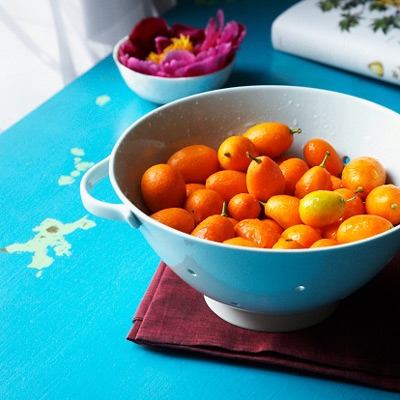
Kumquats
Kumquats
With its sweet skin and tart pulp, kumquats taste like an inside-out orange. The small ovular fruit can be eaten whole to savor the contrast in flavor — or, if bitter isn’t your thing, just eat the fiber-rich peel for a straight burst of sweetness. This exotic fruit also provides a blast of vitamin C, an antioxidant that helps to prevent arthritis, cataracts, and macular degeneration, while promoting radiant, glowing skin and healthy, strong hair. Pop it in your bag for a perfect on-the-go snack; or slice into rounds and toss in a salad for a little zest. You can even add these under-the-radar gems to your favorite smoothie recipe for a bright shot of citrus flavor — yum!

